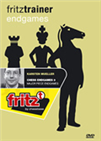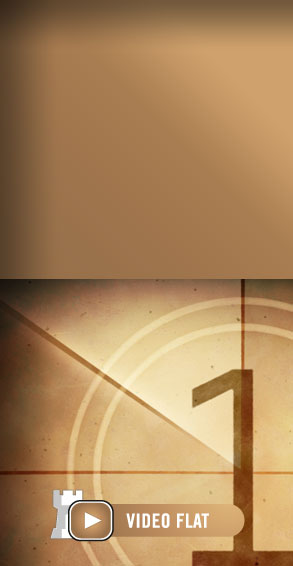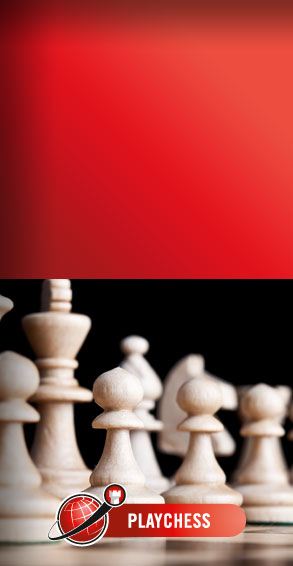Speelman's Agony #99
 The third part of the endgame series tackles queen endings, rook against minor pieces, queen against rook and queen against two rooks. Queen endings are not nearly as mysterious as they appear at first sight. Knowing a few rules of thumb and principles will make things very much easier for you.
The third part of the endgame series tackles queen endings, rook against minor pieces, queen against rook and queen against two rooks. Queen endings are not nearly as mysterious as they appear at first sight. Knowing a few rules of thumb and principles will make things very much easier for you.
Over 7 hours video training.To begin with today, something a bit different: a study which Grandmaster John Nunn sent me recently in connection with one I've been working on myself. Sadly, it closely (though not exactly) anticipates what I wanted to achieve. The solution is at the end.
Try your moves on the live diagram!
Over the past month, I've been looking at the Bryntse ganbit, a line in which White sacrifices two pieces for a queen and crucially much the better structure. Very unusually for gambit play, he doesn't start with a significant lead in development and Black's most challenging responses try to disrupt White before he can get organized. However, if White succeeds then with well anchored minor pieces and an extra pawn or two then the pieces and rooks may well outperform the queen and rooks since queens are only really effective when they have something to attack and if everything is anchored there isn't anything.
In general when assessing a chess position the main elements are material, structure and energy. In gambit play you sacrifice material and sometimes structure too normally in order to gain a preponderance of energy — a lead in development. While sometimes, conversely you are prepared to lag in development in order to get the better structure putting an obligation on the opponent to “do something” immediately or at least before you can get fully organized and enjoy your positional advantage at your leisure.
 The tension between structure and energy persists throughout the game of course and I'm reminded of a slightly agonizing loss of mine way back in Lone Pine 1978 the tournament where I got my final IM norm. I had a suspicion I might have used it here before and indeed when I checked, I had done so in October 2016 but here it is again fairly briefly with the critical position highlighted.
The tension between structure and energy persists throughout the game of course and I'm reminded of a slightly agonizing loss of mine way back in Lone Pine 1978 the tournament where I got my final IM norm. I had a suspicion I might have used it here before and indeed when I checked, I had done so in October 2016 but here it is again fairly briefly with the critical position highlighted.
In the second game, Kiriakos Vlahos (pictured), a strong Greek player who lived for years in England and used to play for the King's Head, sent me this a good while ago and with its transformation of energy into a murderous king hunt it seems a good moment to use it.
Click or tap the second game in the list below the board to switch games
Bologan: "If you study this DVD carefully and solve the interactive exercises you will also enrich your chess vocabulary, your King's Indian vocabulary, build up confidence in the King's Indian and your chess and win more games."
Submit your games and win free Premium!
 At the airport, in the hotel or at home on your couch: with the new ChessBase you always have access to the whole ChessBase world: the new ChessBase video library, tactics server, opening training App, the live database with eight million games, Let’s Check and web access to playchess.com
At the airport, in the hotel or at home on your couch: with the new ChessBase you always have access to the whole ChessBase world: the new ChessBase video library, tactics server, opening training App, the live database with eight million games, Let’s Check and web access to playchess.comDid you enjoy the column and instructive analysis by GM Jonathan Speelman? Do you wish you could have a world-renowned grandmaster analysing your play? You can!
To submit your games just upload a PGN or ChessBase file (.pgn or .cbv archive), along with your name and e-mail address. Send one success story (Ecstasy) and one loss (Agony).
Tell why you chose them, where or when they were played. Please do include your email address, so Jon can reply, and preferably a photo of yourself for our article.
If your game is selected Jon will contact you personally, and not only will you get free detailed commentary of your games by one of chess’s great authors and instructors, and former world no. 4 player, but you also win a free three-month ChessBase Premium Account!
A three-month Premium subscription to ChessBase Account means you get:
- Premium access to the Playchess server with ratings, simuls, lectures, and live commentary of top games
- Access to all Web apps with no restrictions, such as the Cloud database, and more!
- Full access to the Video archive, which not only includes all the past lectures by Daniel King, Simon Williams and others, but also many full ChessBase products you would normally need to buy in the ChessBase Shop but that you can view for free as a Premium subscriber.
Solution to the study
See also:


















 The tension between structure and energy persists throughout the game of course and I'm reminded of a slightly agonizing loss of mine way back in Lone Pine 1978 the tournament where I got my final IM norm. I had a suspicion I might have used it here before and indeed when I checked, I had done so in October 2016 but here it is again fairly briefly with the critical position highlighted.
The tension between structure and energy persists throughout the game of course and I'm reminded of a slightly agonizing loss of mine way back in Lone Pine 1978 the tournament where I got my final IM norm. I had a suspicion I might have used it here before and indeed when I checked, I had done so in October 2016 but here it is again fairly briefly with the critical position highlighted.




